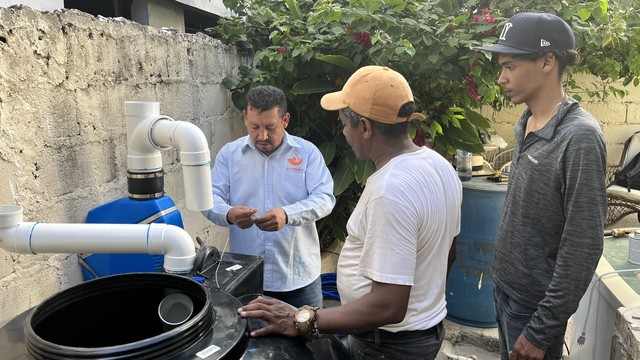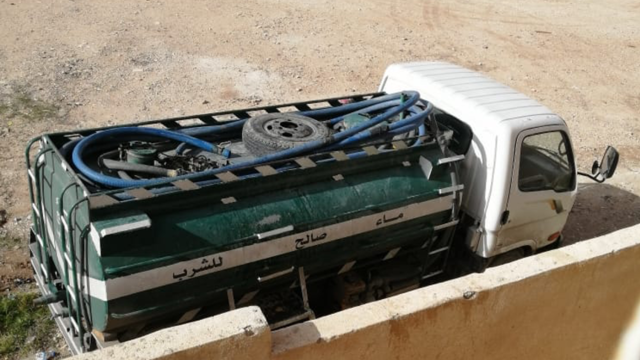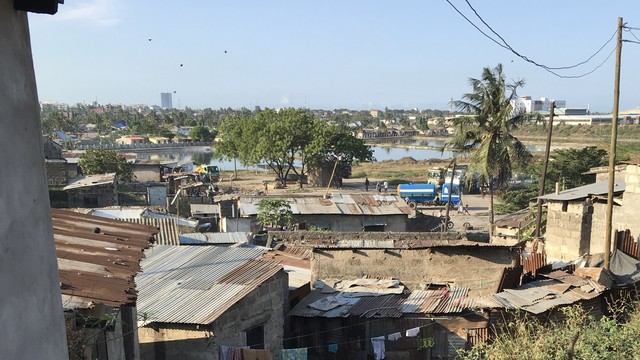How small changes can make a big impact in achieving sustainable sanitation
Facebook guest blogger Laia Gemma García describes how the traditional pit latrine got an upgrade as part of a project in rural Tanzania.


Finalised toilet block and water tank as part of the Facebook guest blogger's project to improve traditional pit latrines in a remote community in Tanzania (Photo: copyright Laia Gemma García)
We asked our Facebook followers if they had a toilet story to tell? Perhaps an experience from their community of how toilets have changed lives, or even saved lives? Or about other sanitation solutions that have made a difference. Here, architect and PhD student Laia Gemma García describes a project seeking to improve the traditional pit toilet.
In 2016, I spent a couple of months living in a rural area of northern Tanzania, as part of a student programme with a local architectural NGO. I lived with a local family, sharing their common spaces; eating together and of course sharing communal facilities, most notably the bathroom.
In this village, as with many isolated regions of Tanzania, toilets are pit latrines that consist of three parts: an underground pit, a hand-made concrete slab with a drop hole and a shelter. The toilet outhouses are usually a minimum of 10 metres away from the main buildings to prevent bad smells reaching living spaces.
As someone who had lived their entire life with a flushing toilet, the change was, despite my best preparation, something of a culture shock. After discussing the village’s sanitation with locals I started to look into plans to improve their toilets. While my initial thought was to work on a flushing toilet, I soon came to understand that, for the village, basic safety and hygiene were a bigger priority.
Understandably, there are considerable challenges with improving toilet facilities in an under-resourced community; I focused on the most feasible and affordable solutions to upgrade the traditional pit latrines.

Traditional pit latrine under construction in a rural community in Tanzania (Photo: copyright Laia Gemma García )
What do you need to have a proper toilet?
Once I was back from Tanzania and as part of my research, a workshop for architecture and engineering students was organised, where proposals on how to deliver better sanitation facilities were drafted. Students were asked to think about the basic priorities for bathroom facilities – most agreed on flushing toilets, natural lighting, comfortable toilet dimensions and running water.
By contrast, when the same question was put to the villagers during a participatory activity led by a local NGO, they identified basic health and safety needs – such as the dimensions of the slab hole being small enough to prevent accidents, and strategies to avoid the toilet door rotting when it came in contact with urine and water.
The locals’ concerns revealed a clear mistrust of efforts to improve toilet conditions. They assumed that toilets are innately unsafe and unhygienic.
Pit latrine toilet: an improved prototype
The research’s main objective was to find solutions that were easy and accessible for all, taking into consideration local conditions. In 2018, we designed a public toilet block adjacent to a health centre with the intention of building a prototype that could be easily replicated by villagers on their private plots.
The entire block was built with compressed stabilised earth bricks produced on site with local soil. Bamboo from the surrounding area was used to build the toilet ceilings.
The design of the improved toilet block includes an external pit, which prevents the construction of unstable concrete slabs. There are many benefits of moving the pit away from the toilet floor – it avoids direct contact with human waste, decreasing the spread of diseases, and a separate ventilation pipe from the pit prevents entry of insects and flies.

Details of a squat toilet and the floor of the latrine (Photo: copyright Laia Gemma García )
Additionally, the construction of the squat toilet includes a trap pipe which further prevents smells or insects entering the toilet. To ensure the continuous supply of water for flushing and hand washing, the toilet includes a masonry water tank that collects rainfall water from the toilet roof.
This research project made clear that traditional pit latrine can be improved significantly without considerable additional costs, and by using local materials and workforces.
By attending creatively to the small details, this project promoted dignified toilets that are safe, hygienic, desirable and easy to replicate.
About the author




